I’ve had a lot of my non-indigenous friends express sympathy for the beleaguered author, Joseph Boyden. They think his background sounds complicated and that perhaps he’s being unfairly criticized for not being “Indian enough,” as one of them said to me today.
The discussion that’s been raging on social media, however, is not about “how Indian” Boyden is, but whether he has any indigenous ancestry at all, or whether he’s made that up entirely.
This is based on two major concerns: his wildly divergent stories about his ancestry, and the inability of APTN, after conducting a genealogical/archival search, to find any indigenous ancestry at all. Boyden argues, in response, that the records don’t reflect his family history and that the family hid their indigenous ancestry, and for sure, that’s always possible.
So let me simply set out a list of some of the inconsistencies that remain problematic, despite his interviews this week with Candy Palmater on CBC and Mark Medley of the Globe and Mail.
In 2005, Boyden told the Quill and Quire that there was “Métis in [his] ancestry, and his father’s Irish-Catholic family history also has some Micmac in the mix.”
The mention of his father being part Micmac (Mi’kmaq) appears again in an interview with The Scotsman that same year, and a further reference to his aboriginal “blood” as including Mi’kmaq was reported in the Globe and Mail in 2008.
In his December Twitter statement responding to the APTN article, Boyden said that he did not recall ever saying he was Mi’kmaq and that the interviewers must have misunderstood him when he said his father had Nipmuc blood. The Nipmuc are a small Indian tribe in the US, so this certainly seemed plausible, as the two words sound similar.
Here’s the entire tweet:
https://twitter.com/josephboyden/status/812798846438928384
However, Boyden told an New Orleans reporter that he was “Mi’kmaq on my father’s side. They’re an east coast tribe in Canada.” Which really negated any suggestion of confusion on the part of the interviewers. In his interview with Mark Medley yesterday in the Globe and Mail, Boyden finally admitted that indeed, he had said he was Mi’kmaq, but it was a mistake:
“Métis, when I used it, it was as the Canadian federal government defines it. Mi’kmaq was a mistake, and I did make that mistake.”
Medley didn’t ask him to explain how the mistake originated, but I would note that the Mi’kmaq are a completely different nation from the Ojibway or Nipmuc, linguistically, culturally, and territorially. It would be like telling someone I’m Welsh or Polish, when I’m Canadian. I don’t really know how one could make that mistake or do so repeatedly.
As for the claim of Nipmuc heritage, in the statement he provided APTN for their original story, Boyden wrote:
Over the last few decades I, along with some siblings, have explored my family’s heritage. We’ve uncovered and traced a fascinating and personal genealogy, a genealogy often whitewashed of our Indigenous ancestry due to the destructive influences of colonialism,” said Boyden, in the statement. “While the majority of my blood comes from Europe and the Celtic region, there is Nipmuc ancestry on my father’s side, and Ojibwe ancestry on my mother’s [sic].”
Barrera reports: “It wasn’t until about 2014, in an interview with Walrus magazine, that Boyden began to say his father’s ancestry included links to the Nipmuc. The next year, in an interview with CBC’s Unreserved host Rosanna Deerchild, Boyden revealed he discovered Raymond Wilfred Boyden’s Nipmuc heritage by reviewing Nipmuc membership rolls.”
I find it interesting that Boyden would rest his claim to Nipmuc heritage on his father’s side by relying on historical census documents but deny the reliability of historical materials when it comes to the Ojibway heritage he claims, but I digress.
The problem is that the Nipmuc themselves don’t support the information Boyden provided. The Nipmuc’s main historian and genealogist says she finds the claim confusing. In the APTN story, she points out that Boyden is not a Nipmuc name. She looked at the female names of Boyden’s ancestors from the records (which remember, predate the date of the census rolls Boyden relies on) and couldn’t find a connection.
Although Boyden said in his Twitter statement that his Nipmuc ancestors were from Dartmouth, Massachusetts, she debunked that altogether:
I think it’s very hard to maintain a claim based on one’s own research when that research is not only not supported by the historical evidence, but is contradicted by those who are actual experts in the area. That leaves us with Boyden’s claim to Ojibway ancestry.
In his Twitter statement, as noted, he claimed his Ojibway ancestry through his mother; his father’s ancestry, he said, was Nipmuc. However, it is through his father’s brother, Erl, that Boyden has most often referred to his Ojibway heritage. The 2008 Globe and Mail article refers to this claim, that both sides of the family had Ojibway “blood”:
Both his father, an Ottawa-born Irish Catholic who later became a doctor and served with distinction in the Second World War, and his mother, an elementary-school teacher of Scottish origin, had aboriginal blood (Ojibwa, Mi’kmaq). During the summer, they’d take their 11 children – Boyden was the third youngest – camping and canoeing in and around Georgian Bay where the Jesuits once roamed. An uncle, Erl, his father’s older brother, was nicknamed “Injun Joe” and, when he wasn’t “travelling the world like a bum – he was even in a Jimmy Cagney movie years ago,” he lived in a tepee in Algonquin Park.
In the 2008 Penguin Reading Guide to Three Day Road, Boyden wrote that “In the summer of 1945, Erl, my dad’s older brother, was living a traditional lifestyle in a teepee near Algonquin Park, selling crafts to tourists.” He adds: “I grew up with history and myth swirling around me, stories of my father’s war exploits and my uncle Erl’s Ojibwa ways inseparable.” He referred to his uncle as somehow acquiring the “horribly racist moniker” Injun Joe.
But as both APTN and blogger Robert Jago reported, “Injun Joe” chose the moniker himself, as part of a persona he adopted to sell Indian souvenirs.
Jago posted several newspaper articles about a coroner’s inquest into the tragic death of a tourist in the mid 1950s when Injun Joe put on a headdress at the request of a tourist, and fired what he thought was an unloaded rifle. Injun Joe was cleared, but all the news reports of the time indicated that “Injun Joe” was not really an Indian, but Erl Boyden, a white man. (You can see these stories imbedded in the APTN story, along with some pictures of Injun Joe.)
Dorothy Sangster of Macleans magazine did a lengthy feature about Erl Boyden in 1956 called The Double Life of Injun Joe. Here are a few excerpts:
When Erl Boyden was five years old, his Uncle Richard took him to a wild-west show in Ottawa and introduced him to Buffalo Bill.
Excited by tom-toms and war cries and trailing war bonnets, little Erl fell in love with Indians on the spot. He took to cutting out pictures of Indians, improvising Indian costumes, collecting Indian souvenirs. His bedroom in the old Boyden home on Mackenzie Avenue, in the shadow of the Parliament Buildings, became a litter of bows and arrows and buckskins. His most treasured possession was a five-foot cotton tepee his aunt Bertha O’Donaghue sent him from New York. The Last of the Mohicans was his favorite book and he and his two brothers saved their nickels to see Broncho Billy Anderson on Saturday afternoons at the neighborhood movie house, and Custer’s Last Stand, a stage show that came to Ottawa’s Grand Opera House in 1907. School bored young Erl—his thoughts were elsewhere. He saw himself as a white boy who by his knowledge of hunting and outdoor lore is adopted by an Indian chief and given a place of honor in the tribe.
Boyden is sixty years old now, but he’s still playing Indian. All summer long you can find him sitting beside the highway at Dwight, a small resort town 160 miles north of Toronto on the road to Algonquin Park, under a sign that says, “Ugh! Indian Souvenirs!” The tourists know him as Injun Joe.
The toy tepee has changed into a real tepee. The buckskins and tomahawks are spread out on counters for sale. The child is a man who refuses to put away childish things. “Haven’t you guessed? I’m a case of arrested development, Peter Pan in a war bonnet.” he says. Erl König Boyden— he was named after his mother’s favorite Schubert song— has been soldier, sailor, artist, stage designer and Jack-ofall-trades, but says the proudest day of his life was the day he met Buffalo Bill….
He says: “They come here and buy armfuls of stuff marked ‘Algonquin Park.’ they take pictures of what they idiotically believe to be a real live Canadian Indian and away they go into the wide blue yonder, happy as larks. Who am I to spoil iheir fun? Next year more tourists will arrive, similarly bathed in gloom and burdened with filthy lucre. Ah well, as the French observe so truly, c’est la vie!”
In the news release Boyden issued this past week in response to the swirling controversy, Boyden says that “My family’s heritage is rooted in our stories. I’ve listened to them, both the European and the Indigenous ones, all my life. My older sisters told me since childhood about my white-looking father helping his Indian-looking brother hide their blood in order to survive in the early 1900’s.”
That Indian-looking brother he refers to was clearly Erl Boyden. If Erl was trying to hide his identity, he certainly found a peculiar way to do it: he didn’t try to pass as white, but as Indian. And he himself denied that he had any Indian blood. Once again, from the 1956 Macleans article:
Erl König Boyden may look like an Indian, think like an Indian and spend most of his year among Indians, but so far as he knows he hasn’t a drop of Indian blood. His father was a well-to-do Ottawa merchant (in household furniture) who traced his family to Thomas O’Boyden of Yorkshire. His mother was Irish.
Erl’s statements about his non-indigenous ancestry, by the way, are supported by the APTN historical research.
So all we are left with is Joseph Boyden’s word that the records are wrong based on his family’s oral history. However, his own mother and her brother, Richard, told APTN that the family’s claim to indigenous ancestry wasn’t based on oral history, but on the research Boyden did. His uncle (his mother’s brother Richard) told APTN:
“He is the only one who obviously brought this whole situation to the forefront because of his interest in Aboriginal people in Canada, and his writings are certainly Aboriginal. He is really the one who raised this issue to begin with or indicated there was a connection,” said Richard Gossling, 82, who is Boyden’s uncle on Blanche Boyden’s side. “I am sure that Joseph has answers that we certainly don’t have because of his writings and whatever research he did.”
Joseph Boyden’s mother, Blanche Boyden, said her son has the answers.
“I don’t know much myself,” said Blanche Boyden, 86, in a telephone interview with APTN. “We didn’t keep many records in those days…. Joseph proved it and he got the papers and everything so there is no question about it.”
Blanche Boyden said the “key” was her grandmother, Blanche McInnes, who her son discovered to be Indigenous.
“Soon as I gave him the name McInnis, he had no problem with it,” she said.
Except that APTN established that Hector McInnes, Blanche McInnes’s father, wasn’t indigenous at all: he was of Scottish and Irish ancestry. There was one missing record: the ancestry of Hector’s wife, Kate Ellis. APTN couldn’t find records for Kate Ellis’s parents, George and Margaret Ellis. I found the record: it’s in the 1881 census records: they were born in England.
So let’s be clear: this isn’t about an absence of records. The archival records exist: they just don’t support Boyden’s claim to indigenous ancestry. This is not about “blood”: that’s not why this controversy continues: this is about honesty.
There are many individuals from indigenous communities who have stepped forward over the past month to report on Twitter that Boyden told them different stories about his background as well. For example, he told an acquaintance of mine from Cape Croker that he was from Wasauksing First Nation; he told the same thing to the editor of Muskrat Magazine. He told a leading Métis writer and lawyer, Chelsea Vowel, that his mother came from Cape Croker (Cape Croker is Saugeen Ojibway and a totally different First Nation from Wasauksing; as an aside, I worked with the Saugeen Ojibway for a decade as their lawyer on treaty fishing rights).
This article by Jesse Brown in CanadaLand reports only a few of the discrepancies. As blogger Robert Jago said this week, the stories are getting hard to keep track of.
But the claim I found most troubling was one that occurred during an interview Boyden had with Peter Mansbridge, where they talked about the writing process. Boyden told reporter Leslie Stojsic during the camera shoot that “his ancestors were from the bear tribe (Attignawantan) of the Wendat population.”
The Wendats are commonly often referred to as Huron — these are the people he writes about in The Orenda. But they are an Iroquoian nation, again, totally different from the Ojibway or the Nipmuc peoples.
In the APTN story that questioned his shifting identity, Jorge Barrera quoted from a statement Boyden provided APTN as follows :”My family is Mukwa Dodem, Bear Clan.” That’s a claim to being Anishnabe Bear Clan, or Ojibway, not Huron. As one of my indigenous Twitter friends, @redindiangirl pointed out, how can you know your clan if you don’t know your community?
In his most recent press release, Boyden says: “Children don’t go about consciously presenting identities; they just are who they are. And that’s how I was: a white kid from Willowdale with native roots. The Ojibwe family I grew up with in summers on Christian Island still call me cousin or uncle. The bad poetry I first scribbled as a troubled teen was about searching for my mother’s clan. For the last 22 years I’ve been a member of a Moose Cree First Nation family, active in their community….”
Spending summers in a First Nation community doesn’t make one indigenous or my daughter could claim to belong to a few different First Nations.
The Tozers, the Moose Cree First Nation family in Northern Ontario that Boyden has long befriended, clearly love the man and consider him family. No one can dispute their strong, abiding friendship; I wish had friends who were as loyal as they are.
But they can’t confer indigeneity on him either. That’s up to the community to decide. Anymore than I could have Australian friends stay with me each year and because we’re very close, decide they’re Canadian.
Following his interview with Boyden this week in the Globe and Mail, Mark Medley wrote as follows:
But also damning, to many, was the collection of quotes Mr. Boyden had given to the media over the years, which pegged his ancestry as Métis, Mi’kmaq, Ojibway and Nipmuc. Had he knowingly lied about his heritage?
“Never,” he said. “People are calling it an ‘ever-shifting identity.’ I have not [lied]. I have misspoken one time – well, not one time, a few times.” When asked about the discrepancies in his statements about his ancestry over the years, he replied: “What are the discrepancies?”
I’ve pointed out some of the times he’s “misspoken” and why his interviews this week don’t really answer the hard questions. Maybe in the future, he’ll provide some clearer answers.
________________________________
NOTE: (January 15) A reader, Kelly T, notes in Comments, below, that I haven’t mentioned Boyden’s claim to be Métis. I had left that out deliberately, both in the interests of length and also since he retracted that claim in his December Twitter statement, saying he thought the term meant “mixed blood.” This is not unreasonable, as it is a common mistake, although I would note that Boyden wrote a book on Métis leaders Louis Riel and Gabriel Dumont.
However, as Kelly T. points out, in an email to Métis writer/lawyer Chelsea Vowel, posted on Twitter, he told Vowel that his mother “was always told there was a Red River connection on her mother’s side.” This is at odds with what his mother and her brother told APTN, which was that they had relied on his research concerning their indigenous ancestry, and that the “key was Blanche Boyden’s grandmother, Blanche McInnes, who [Boyden] discovered to be Indigenous.” According to the 1881 census and APTN’s research, she wasn’t.
In his interview with Candy Palmater, Boyden indicated he used the term “Métis” as the federal government used it some twelve or thirteen years ago. However, Boyden claimed to be Métis in a 2005 Quill and Quire story, in a 2011 Nuovo magazine story, and in an interview in Macleans magazine in 2014. He also received an honorary degree from Nipissing University in 2009: the press release refers to his Irish, Scottish and Métis heritage.


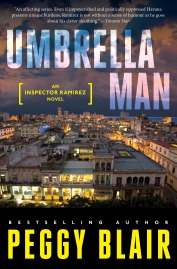
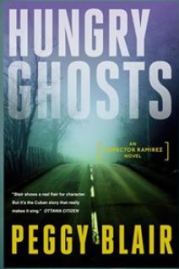
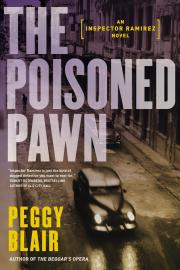

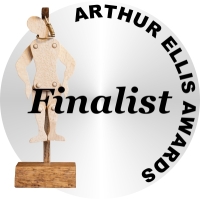
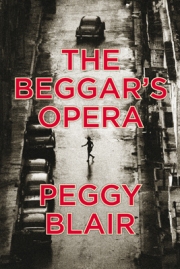

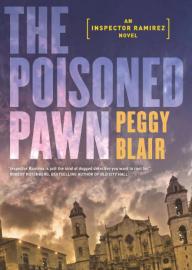

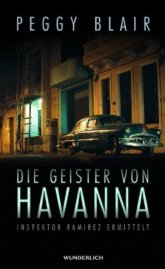





Good, very thorough work on this.
Especially the uncovering of Kate Ellis’s background — that’s real news. You should forward that to Jorge Barrera to add to his piece.
I think this article of yours is the best I’ve read on the controversy. Focuses on whether he lied or not, which is all that matters to me.
Thank you for posting.
LikeLiked by 2 people
Thanks. Will do.
LikeLiked by 1 person
Excellent and thorough article. The issue has always been about Truth-telling. Please submit to get published in a mainstream paper.
LikeLiked by 3 people
Good research and observations. My families have been on the continent for many generations and I’ve spent a lot of time in indigenous communities. I can certainly understand the desire to embrace that identity but wanting to be indigenous doesn’t make it so, any more than wanting to be royalty!
LikeLiked by 1 person
Interesting that he mentions Christian Island. While there is indeed a native community there, two long stretches of the island are occupied by white cottagers. Typically they cross on the ferry and then spend the summer there, just like Boyden says he did.
LikeLiked by 1 person
NYT quoted Hayden as saying that he’d spoken to elders and relatives in the community and they didn’t know Boyden; however, he has since said that is incorrect. He has stated Boyden spent summers on Christian Island with a non-native family and that while he did get to know a few families on the reserve, the community is confused by his claim.
LikeLiked by 1 person
Wow that was thorough. (i’ve never used thorough in a sentence before) and Miigwetch. I believe you are right. It is about integrity (something I know nothing about). It stands to reason (wow myself) that he’s friendships built in the Indigenous community are built on lies. Its sad we take people at their word. We shouldn’t have to check but i guess when you can’t answer “who you’re people are” you might want to ask again. Thank you for a good look and understanding its more than about Blood. Identity is the number issue for Indigenous people (even when we don’t know it). It is also about who controls the narrative. Boyden did it for so long and he fell into belief of his own crafted story. Now it is questioned he can connect the story lines. For me its personal. Our families haven lived through the policies of oppression by the government and the acts to get rid of our heritage through laws/indoctrination/displacement.
LikeLiked by 1 person
Years ago, a friend told me “you can only be betrayed by your friends.” I’ve never forgotten that. Thanks for your comments!
LikeLike
Thank you for disseminating all these details. It makes trying to sort through the majority of points far easier. Honesty is the key point. Integrity.
Many of his fans tell us we need to move on, this isn’t important, “forgiveness is one of our sacred teachings” etc. He apologized they say – but he didn’t. He explained away such a small part of his damage. These fans forget accountability is also a sacred teaching.
I know people in my community who have questioned Boyden’s veracity for years. They didn’t have the benefit of all these details, but there were details in his books that upset them and they said, he knows very little of Indigenous lives. From his misrepresentations of cultural traits and customs to speaking in place of Elders. He is responsible for millions of people thinking his writings are facts about Indigenous peoples. People actually use his books as records of historical fact.
He also took the answers to Indigenous issues from Indigenous scholars and claimed them for himself so he could be that ‘go-to’ Pan-Indian for media. None of this has been addressed.
What’s really ironic is how many hoops the rest of us have to jump through to prove our identity to the government of Cda or even our own communities. My application required 5 immediate and verifiable generations of Indigenous ancestry, so for all those people who still want to tell us who we need to accept as one of us, you’re treading on full impropriety.
LikeLiked by 1 person
Yes. I think his various claims to being indigenous were what led people to think his books were authentic and his willingness to take on a Pan-Indian/Pan-Canadian role showed how little he understood about indigenous communities. I wrote about the misunderstandings that can arise when this happens in my last blog post. Thanks for dropping by; appreciate your comments.
LikeLiked by 1 person
Thanks, Peggy. I look forward to reading your previous post. Hiy hiy.
LikeLiked by 1 person
I am a settler who is very privileged to have worked for remote First Nations over the years. A few months back, I attended his presentations when he was invited to speak at a conference addressing Indigenous issues. He presented himself as a spokesperson for Indigenous issues, referring to his Indigenous friends, elders and teachers, in particular Basil Johnson. After reading about the questions concerning his ancestry claims, I asked about the costs he charged for attending this event. Yesterday I was informed he charged $10,000 for the two relatively short presentations plus his flights and other expenses. In one of his recent interviews he claimed he only received one $5,000 award meant for Indigenous authors. BUT in reality he receives THOUSANDS of dollars for taking up space meant for Indigenous people. I am disappointed by his conduct. I hope every settler will learn from the teachings Indigenous people are providing for everyone about this very important topic. Thank you Peggy Blair for taking the time to write this important summary for other settlers who care.
LikeLiked by 1 person
Thanks Brian. Yes, I heard of a situation where he charged $12K to speak at UNB to indigenous students. The money ended up coming out of an indigenous student institute there (I’m sorry, I can’t remember the name of it now, but they thought UNB was going to pay, and due to some misunderstanding, UNB didn’t, so they were on the hook.). I’m sure that some of that was travel, but I’m guessing that $ 10K fee was pretty standard. People think he was doing good work, but they don’t realize he was on a paid speaker’s circuit.
LikeLike
Interestingly, his sister Mary is apparently “Aboriginal by birth” and reconnected with her “Aboriginal roots and Elders” in Timmins, according to Goldcorp, where she works as Indigenous Community Relations Manager:
http://www.goldcorp.com/English/Investor-Resources/News/News-Details/2016/Mary-the-Emissary/default.aspx
And according to the Global Indigenous Trust, where she’s a Board Member, she’s Six Nations…
http://globalindigenoustrust.org/staff/nalaine-morin-board-of-directors/
?
LikeLike
Yes, I’ ve seen that information shared by others on Twitter as well. I thought I would confine myself to her brother, since we have his interviews and explanations. Thanks for dropping by!
LikeLike
It may be worth putting it in, however briefly, just to throw another weight on the ‘wholesale fabrication’ side of the scale. Thanks for putting this together, people need to understand what’s really happening.
LikeLiked by 1 person
I’ll think on that, thanks! I have a friend who is going to check the Six Nations registry next week; best to wait on that first, I think, just in case!
LikeLike
Could I push back ever-so-slightly on the contention that “the M’ikmaq are a completely different nation from the Ojibway or Nipmuc, linguistically, culturally, and territorially.” All three are Algonquian languages, and the Nipmuc and Mi’kmaq in particular share a lot of cultural traits, and belong to a region (New England-Maritimes) which had extensive and wide-ranging patterns of trade, intermarriage and cultural interaction long before the arrival of Europeans. So I’d say the difference between Mi’kmaq and Nipmuc is comparable to the difference between Swedish and German, rather than between Polish and Canadian.
But otherwise, thank you for this well-researched and carefully reasoned post!
LikeLike
Absolutely! Thank you!
LikeLike
There’s one Boyden telling of his roots that is not captured above that everyone may find interesting. It was in Chelsea Vowel’s timeline, where she screen-capped a series of emails with Boyden. In one Boyden claims that it is his mother who always claimed Metis ancestry, and that family lore traced Red River roots! This, of course, does not align with what his mother and her brother told APTN, which you do quote above. And it belies his own claim that he misunderstood what Metis means.
https://mobile.twitter.com/apihtawikosisan/status/813506154160685056
For me it was the moment that persuaded me that Boyden is a just a lying liar who lies, and that this issue isn’t at all about ancestry or culture, at all, but about LYING. I’m surprised this item hasn’t gotten more attentionews, I wonder if it just got missed in all the flurry.
LikeLike
Hi Kelly, I was aware of it but since he had apologized and admitted he was not Metis, I decided to leave it out (it is referred to in the Twitter statement I posted above). The whole thing was getting so long and confusing, I thought I’d stick to the contradictions that are easier for most (uninformed) people to understand, as so many think Metis = mixed blood. But I agree with you completely – let’s not forget that this is the guy who wrote a book about Gabriel Dumont and Louis Riel! Thanks for stopping by and taking the time to comment!
LikeLike
I think I will add in a reference though, so thanks for providing me the link to Chelsea’s tweet!
LikeLike
I just want to clarify that I raised the email to highlight the possibiliy that Boyden is fabricating all of it, and not topoint out he used to claim to be Metis. I flagged it because he says it’s his mother who claims Red River roots. This is at odds with:
1) his mother and mother’s brothers comments to APTN, in which they seem to have no family lore separate from what Boyden himself has told them, and
2) his current claims that his mother’s ancestry traces to the Ojibway of Cape Croker, and not the Metis of Red River.
I think that Boyden knows full well he has no indigenous ancestry and is lying about it all, scattering lies everywhere, and finding new and novel lies to paper over old ones (like claiming not to understand the actual meaning of Metis). This email, to me, was the smoking gun. In all of the really important discussions that have emerged around culture, belonging, accountability and blood, I just hate to see the idea that Boyden is just a lying liar sink to the bottom and out of sight.
In any case, this is your piece, and your space (which is really good, btw) so I have no issue with how you wish to frame it. Just wanted to clarify 🙂
LikeLike
I kind of like to just put things out there and let people draw their own conclusions; it does get hard to believe all of this is innocent, for sure. Thanks again. Like I said in the piece, it’s about honesty.
LikeLike
PS. I’ve added the point that this is at odds with what his mother and uncle told APTN; thanks again for your comments.
LikeLike
Thank your for the comprehensive review. What amplifies his fraudulence, arrogance, dishonesty and disrespect is not only the inconsistency, but the elusivity of his most recent responses (to self selected media) also make me wonder how he could have worked with, participated in and contributed to any Indigenous Nation’s community for so many years without knowing (or else willfully ignored) that Nation’s ways, process, protocols etc for being accepted as an accountable member of that Nation.
LikeLike
Thanks for your comments – it demonstrates a careless disregard at the very least. I’ll let others draw conclusions as to his honesty: I’m just trying to put the pieces together and let people decide for themselves. Thanks again.
LikeLike
All in all. It is my conclusion now, that the only nation that JB could possibly claim as his own is the ImagiNATION, seemingly just like his Uncle Erl or “Injun Joe”, as he so monikered himself. This person appears to be the only “Native roots” that has surfaced in the family tree which could possibly serve to support the basis of the Boyden familiy “stories” growing up that JB holds in such high regard. Could JB be the new “Injun Joe the 2nd”? I cannot shake the similarity between the two, even down to duping the public and profiting off of the “poor souls” that don’t know any differently than what they are told. His Uncle would be so proud.
For such a smart man, he has not represented himself as such a smart man. He has yet to substantiate any credible explanation about the many discrepancies as to where he is from to those who have met him. To simply claim ignorance of certain terms and how we must have misheard and misunderstood him. Ugh!
His “Native roots”? We now know their true colour. They are dyed. Fake for all to see, except he who knows that truth.
He has lost me a reader and a fan.
LikeLike
Appreciate your comments. Thanks for dropping by!
LikeLike
Hi Peggy! Always enjoy reading your posts!! BTW, would you possibly be available to attend our book club meeting to discuss your novels at Biagio’s restaurant over dinner on a Thursday evening in March?? Any Thursday that suits your schedule, your dinner would be our treat!!
LikeLike
Jo-Anne – sorry for the delay in responding, have been crazy busy the last two days. I would LOVE to meet with your group. Email me with deets – you still have my email yes? Cheers, Peggy
LikeLike
Joseph Boyden does sppear to be following in his Uncle Erl’s footprints but it was pointed out on Two Row Times opinion page that he may be shadowing Joseph Bruchac..
LikeLike
I don’t know anything about Joseph Bruchac – similar issues?
LikeLike